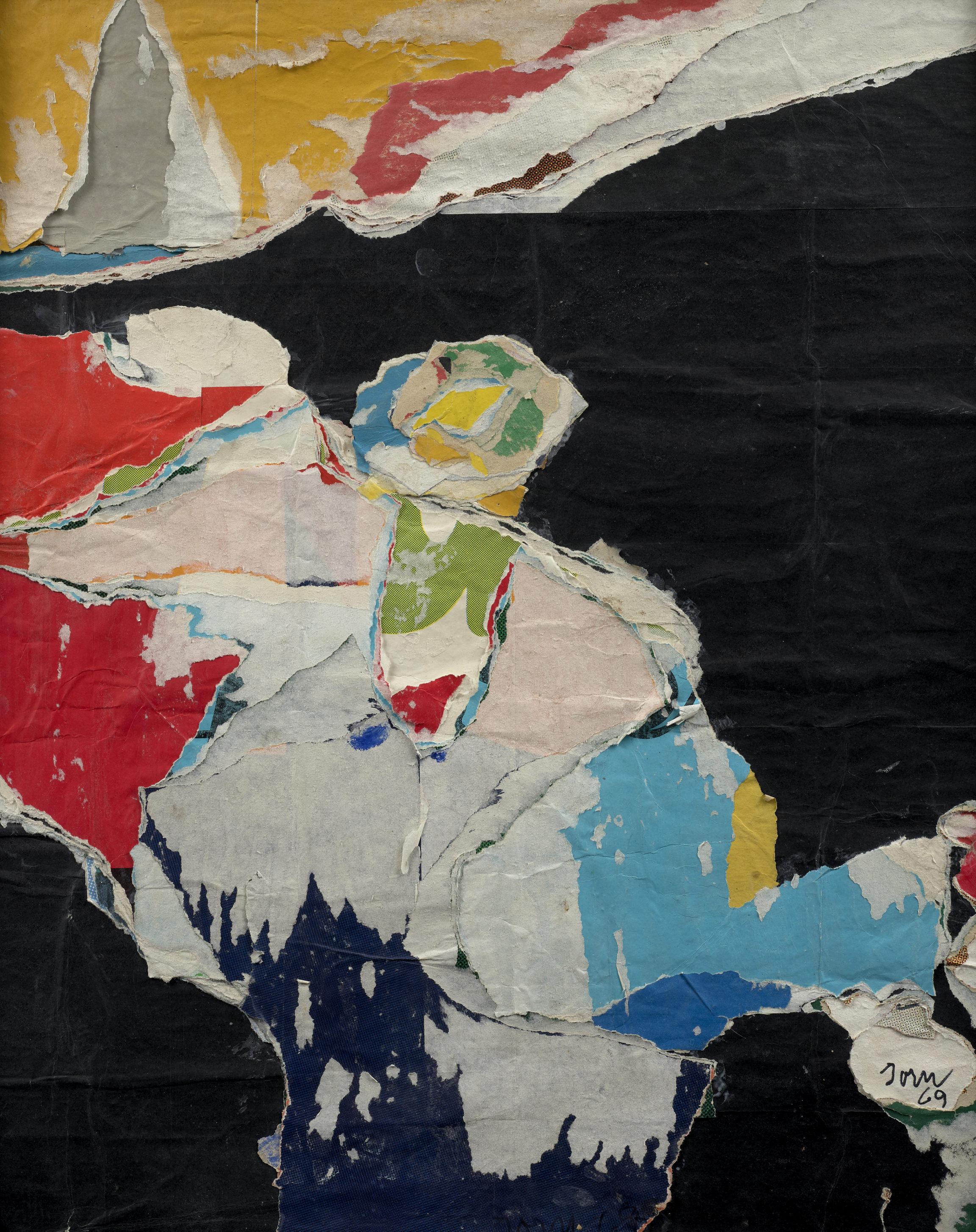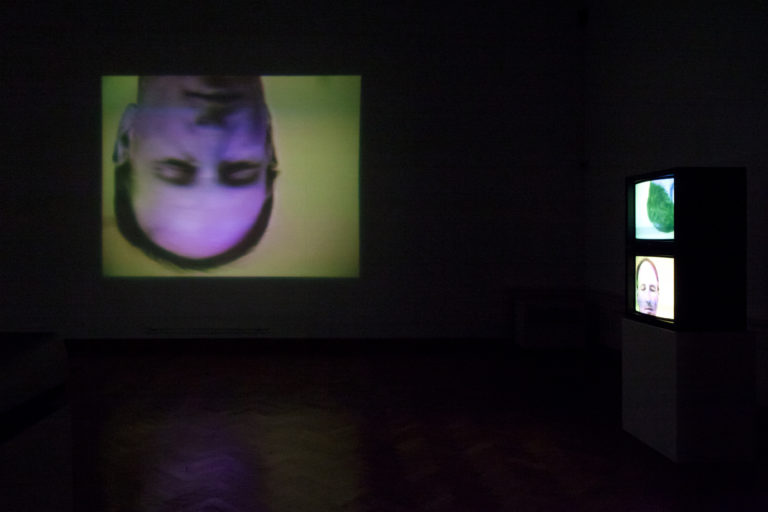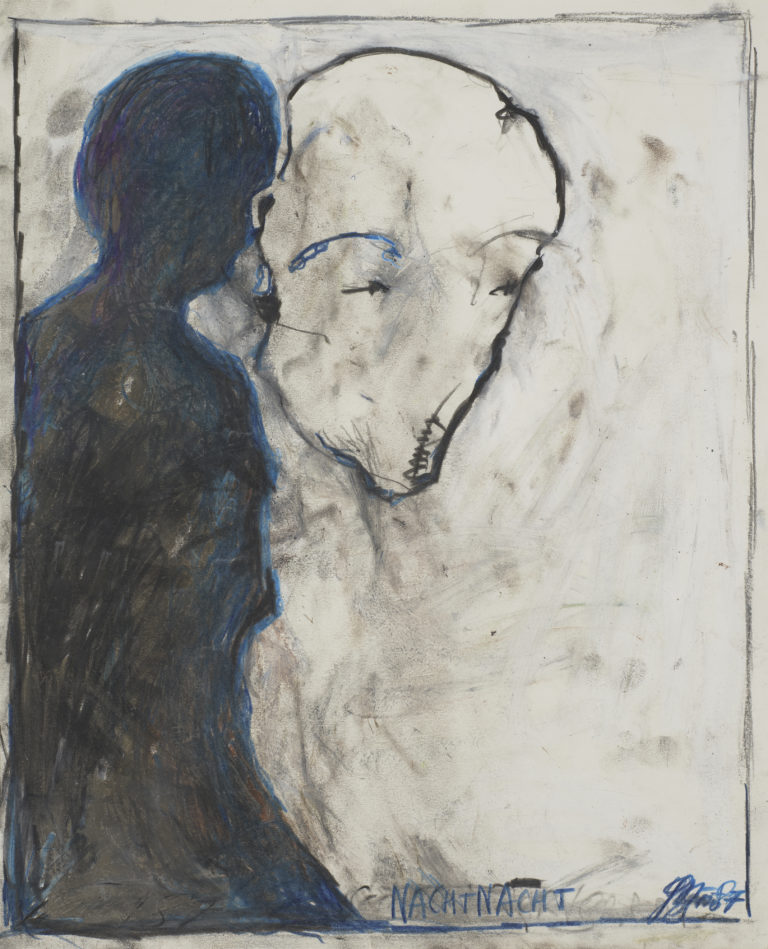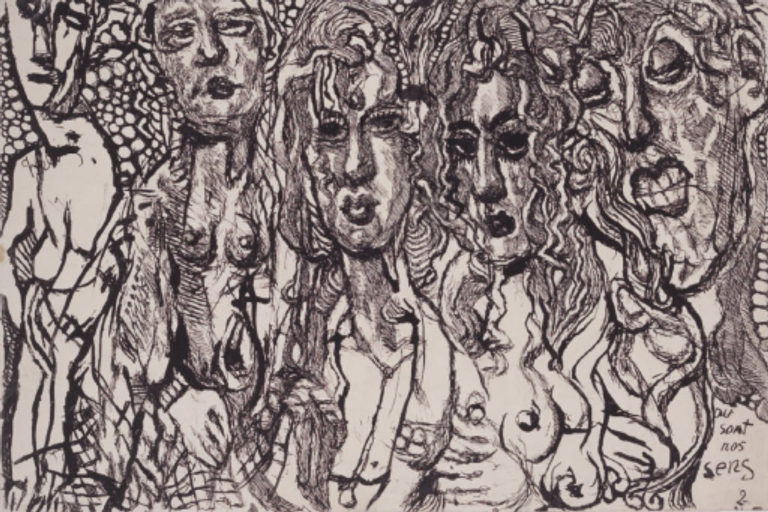Bibliography
Rainer Michael Mason, Dieter Schwarz et alii, Asger Jorn. Un artiste libre, exh. cat. Lausanne, Fondation de l’Hermitage, Lausanne, La Bibliothèque des Arts, 2012.
Asger Jorn. Décollagen, exh. cat. Berlin, Galerie Michel Haas, 1989: cover and n. 14.
Frank Whitford, ‘Collages and décollages,’ in Guy Atkins, with the collaboration of Troels Andersen, Asger Jorn. The Final Years 1965-1973. A Study of Asger Jorn’s Artistic Development from 1965 to 1973 and A Catalogue of His Oil Paintings from that Period, Paris, Yves Rivière, 1981: 59-73.




The Danish artist Asger Jorn was a member of several poetic-political groups, including CoBrA (1948–51) and the Situationist International (1957–72). Jorn is best known for his naïve, expressive paintings and the 1959 Modifications series of interventions on paintings purchased from junk shops and flea markets. During one brief period, he developed a body of works, using his love of chance and explosive colours saturating the space to shape canvases that were smaller in format, drawing on collage. In 1964, he created his first ‘décollages’ from layered posters stuck to walls or hoardings across France.
While collage comprises adding material to a support, décollage involves removing material. Asger Jorn enjoyed quickly tearing and slicing off strips of paper to obtain the shapes and colour combinations he wanted. The process was driven partly by chance, since the artist was reliant on his material: he had no idea what he would find underneath and could only partially control how the paper tore. Décollage offers a simulacrum of spontaneity akin to the techniques used by New Realist artists such as François Dufrêne, Raymond Hains and Mimmo Rotella.
Jorn sometimes added paintings or drawings to his décollages, but not in the case of this work dating from 1969, the last year he produced the work of this kind. The composition shows striking contrasts between large areas of black and the central zone of white shreds, showcasing a handful of colourful fragments. The artist, who named his works once they were complete, seems in many cases to have tried to interpret the resulting images. Here he invites the viewers to see the theft of a viola da gamba with respect to the work’s title, though the work’s materiality opens up endless potential interpretations.